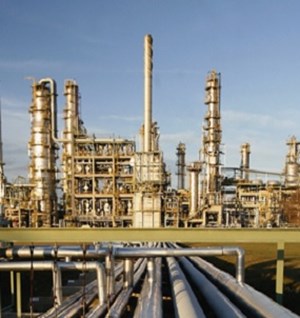(Bloomberg) – Saudi Arabia’s fiscal and current accounts would benefit most from a rebound in oil prices and production, according to the International Monetary Fund, despite the government’s progress in diversifying the $1.2 trillion economy.

“An increase in oil price or a recovery in oil production has an immediate impact,” Jihad Azour, the fund’s director for the Middle East, North Africa and Central Asia said in an interview with Bloomberg TV.
Any rise by 1 MMbpd improves Saudi Arabia’s fiscal balance by 3.2% of gross domestic product and the current account by 3.7%, he said.
The kingdom, the world’s biggest crude exporter, is in the processing of upping production along with other members of the OPEC+ cartel, raising output from slightly below 9 MMbpd to almost 10 million as of September.
Partly because of that supply increase, the Washington-based fund has upgraded its forecast for Saudi economic growth to 4% for this year, compared with an earlier estimate of 3%, according to the latest regional economic report published Tuesday.
While the oil supply boost is bolstering Saudi Arabia’s GDP growth for now, it is also weighing on crude prices. Brent has dropped 18% this year to just over $61 a barrel, much lower than the levels needed for the kingdom to balance its budget.
Bloomberg Economics sees the kingdom’s so-called fiscal break-even rate at $94 a barrel. That climbs to $111 when taking into account domestic spending by the Public Investment Fund, the kingdom’s sovereign wealth fund.
Saudi Arabia is working to navigate dual fiscal pressures. The kingdom is spending hundreds of billions of dollars to drive economic diversification, while depressed oil prices are weighing on export revenue.
Still, “despite the softening in oil prices, the impact on the Gulf Cooperation Council growth was positive because it was compensated by the increase in oil production and oil exports,” said Azour.
Saudi Arabia, the Arab world’s largest economy, has been contending with outlays necessary for its so-called giga projects, including those in Neom, the huge city-like development that’s at the heart of the Vision 2030 program. The government is planning to reduce expenditure next year as it rationalizes spending targets.
The fiscal strain has led to a debt-sale flurry by the kingdom and government-related entities including the PIF.
“The softening of oil prices will lead to a gradual decline in surpluses, external accounts surplus and fiscal surplus.” Azour said. “But again, the level of debt is relatively low. Saudi Arabia has strong reserves.”
The IMF lifted growth projections in the wider Middle East and North Africa to around 3.2% from 2.6% earlier, according to the report.

